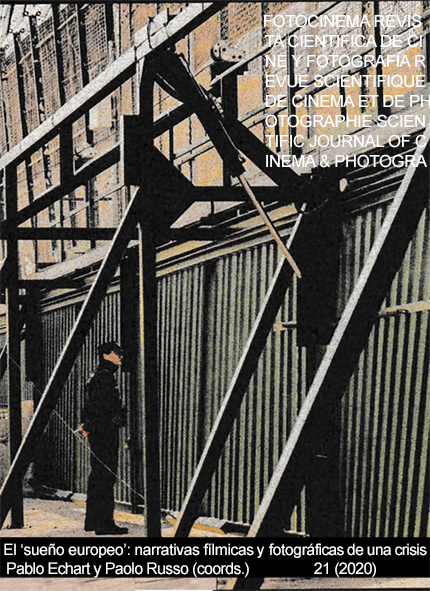The ratings of the Chilean Film Censorship Board in 1960-1973. A study on the changing film reception
DOI:
https://doi.org/10.24310/Fotocinema.2020.vi21.10021Keywords:
Cinema, censorship, censorship board, film ratings, history of cinema, ChileAbstract
The goal of this text is to quantitatively describe the work of the Chilean Film Censorship Board between 1960 and 1973 (period framed by the validity of Decree n°37 of 1959), based on the information of more than six thousand film rating documents. It is argued that the classification of films by the Board focused on the exclusion of minors, rather than total banning of contents. However, there was a wide variation in the ratings based on factors such as government period, distributors, cinematographic topics and members of the Board, which indicates that the CCC did not display a homogeneous and immutable work during the analyzed period.
Downloads
Metrics
References
Biltereyst, D. & Vande Winkel, R. (eds.) (2013). Silencing Cinema. Film censorship around the world. Nueva York: Palgrave Macmillan.
Black, G. (1999). La cruzada contra el cine (1940-1975). Madrid: Cambridge University.
Busquet, J. (1962). Libertad de expresión y censura cinematográfica. Memoria para optar al título de Periodista de la Universidad de Chile.
Ministerio de Educación. Decreto con Fuerza de Ley 37. Santiago, Chile, 1 diciembre 1959.
Ethis, E. (2014). Sociologie du cinéma et de ses publics. París: Armand Colin.
Iturriaga, J. (2015). La masificación del cine en Chile 1907-1932. La conflictiva construcción de una cultura plebeya. Santiago: LOM.
Iturriaga, J. & Donoso, K. (2018). Los debates sobre la censura cinematográfica en Chile, 1959-1973. Tiempo Histórico, 16, 137-156.
Maltby, R., Biltereyst, D. & Meers, P. (2011). Explorations in new cinema history. Approaches and case studies. Chichester: Wiley-Blackwell.
Maltby, R. (2011). New cinema histories. En Maltby, R., Biltereyst, D. & Meers, P. (eds.), Explorations in new cinema history. Approaches and case studies (pp. 3-40). Chichester: Wiley-Blackwell.
Olave, D. y De la Parra, M. (2001). Pantalla prohibida. Censura cinematográfica en Chile. Santiago: Mondadori.
Paranaguá, P. (2003). Tradición y modernidad en el cine de América Latina. Madrid: Fondo de Cultura Económica.
Ramírez, F. (2016). Noches de sano esparcimiento. Estado, católicos y empresarios en la censura al cine en Argentina 1955-1973. Buenos Aires: Libraria.
Downloads
Published
How to Cite
Issue
Section
License
All contents published in Fotocinema Revista científica de cine y fotografía are protected under the Creative Commons Attribution-NonCommercial-ShareAlike 4.0 International (CC BY-NC-SA 4.0) license. All about this license is available in the following link: <http://creativecommons.org/licenses/by-nc-sa/4.0>
Users can copy, use, redistribute, share and exhibit publicly as long as:
- The original source and authorship of the material are cited (Journal, Publisher and URL of the work).
- It is not used for comercial purposes.
- The existence of the license and its especifications are mentioned.
There are two sets of authors’ rights: moral and property rights. Moral rights are perpetual prerogatives, unrenounceable, not-transferable, unalienable, imprescriptible and inembargable. According to authors’ rights legislation, Fotocinema. Revista científica de cine y fotografía recognizes and respects authors moral rights, as well as the ownership of property rights, which will be transferred to University of Malaga in open access. The property rights are referred to the benefits that are gained by the use or the dissemination of works. Fotocinema. Revista científica de cine y fotografía is published in an open access form and it is exclusively licenced by any means for doing or authorising distribution, dissemination, reproduction, , adaptation, translation or arrangement of works.
Authors are responsable for obtaining the necessary permission to use copyrighted images.













13.png)




